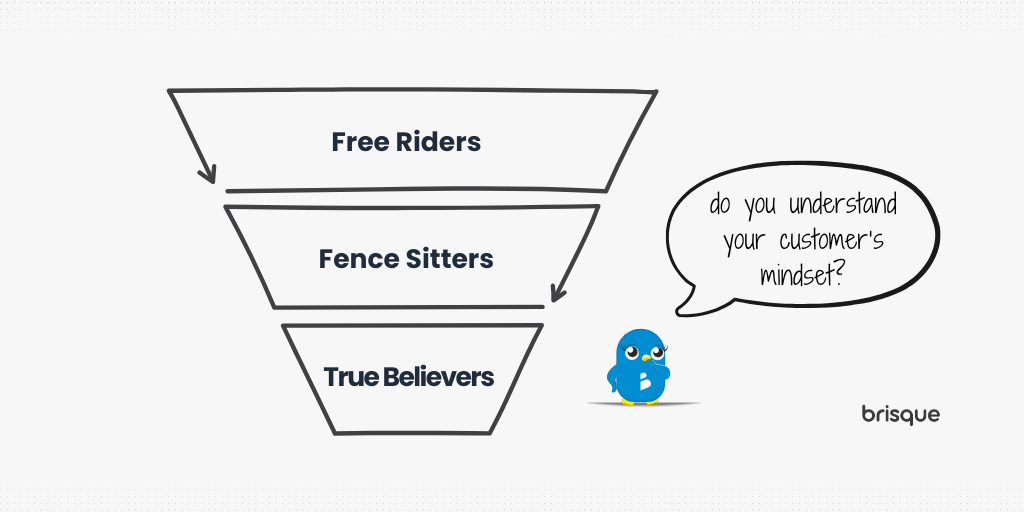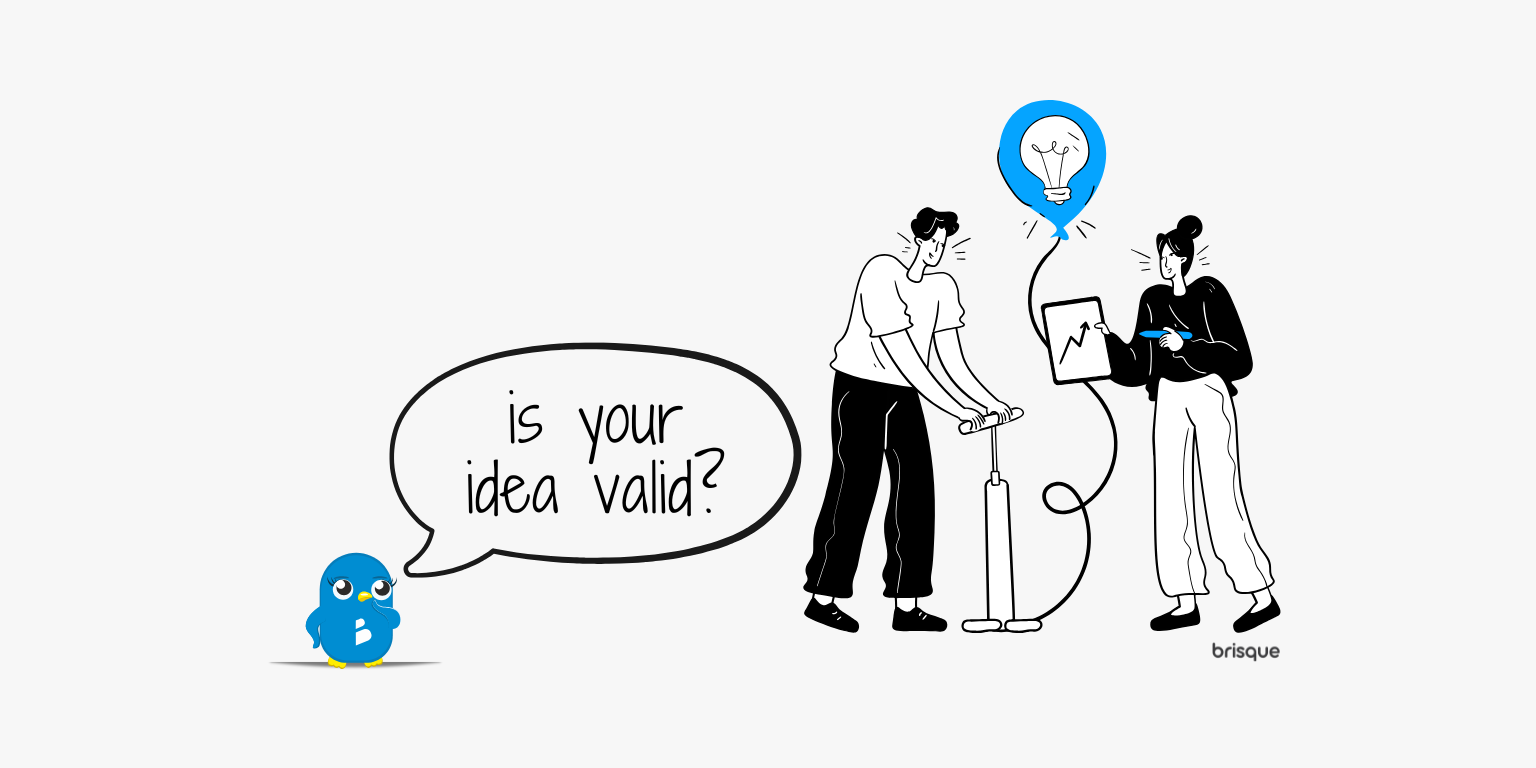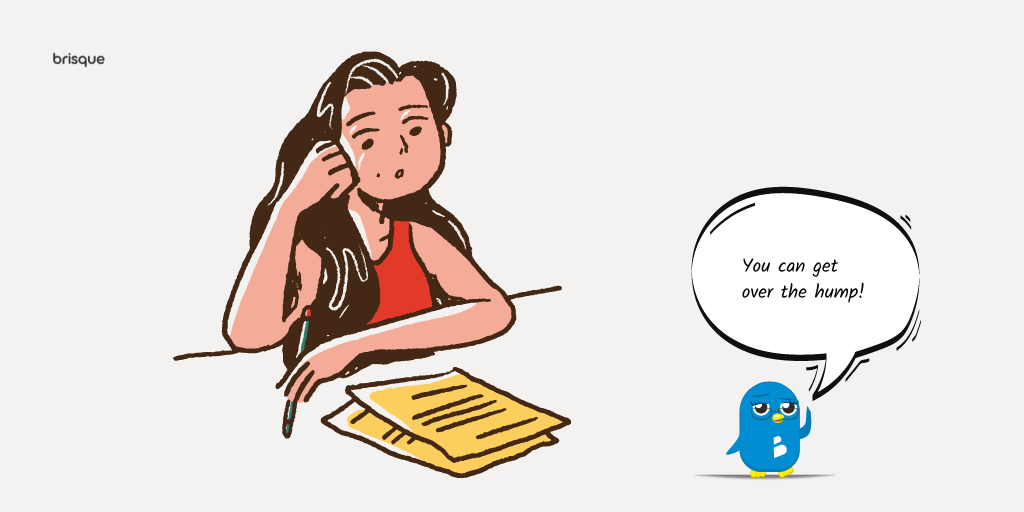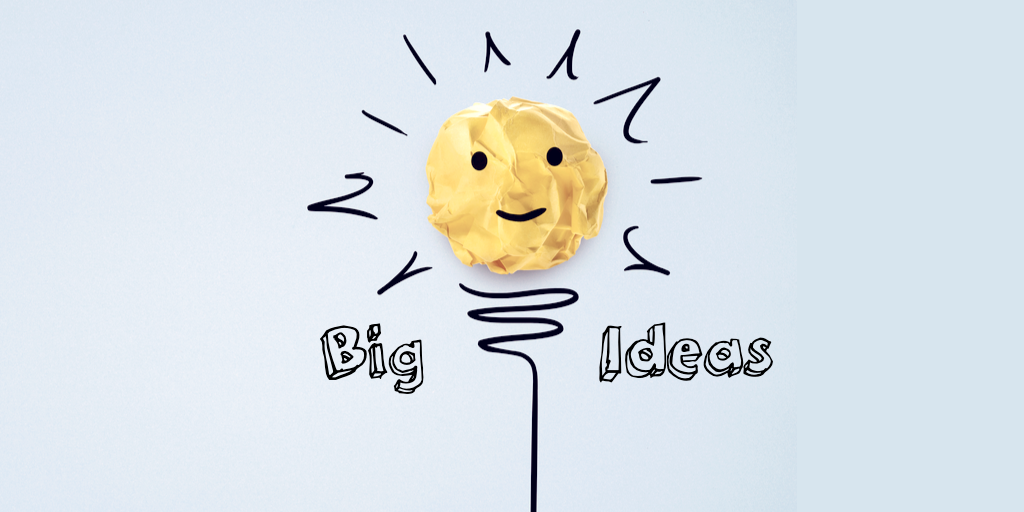I was one of the users caught up in the recent Netflix password-sharing crackdown. One day, I logged into my sister’s Netflix account and got the dreaded message: “This device isn’t part of your household account.”
Guess what I did after that?
I shrugged my shoulders and went about my day.
I made zero attempts to purchase a Netflix subscription for myself. Why?
Because while I didn’t mind using my sister’s account to watch shows from time to time, I wasn’t invested enough to buy my own. However, for others, this Netflix change had the opposite effect. In fact, Netflix reported a $1.9 billion profit increase in 2023, partly due to the enforcement of paid-sharing policies.
Not every customer thinks the same way, even if they enjoy your product
What the Netflix logout experience made clear to me is that not every customer is the same. And the way they think about your product matters just as much as what you offer. As you develop your marketing strategy, it’s essential to understand how to communicate effectively with different customer types.
In this article, we explore three mindsets that shape every marketing funnel and how to align your startup marketing strategy with each.
The Three Types of Customers in a Marketing Funnel
What this experience made clear to me is that not every customer is the same. Broadly speaking, there are three categories in the customer conversion funnel that are based on a person’s mindset:
1. The Free Riders
These customers love your product, but they might never pay for it. They enjoy the value, talk about it, and use it when it’s accessible for free, but they won’t convert to paying users. In the Netflix example, that’s me.
2. The Fence Sitters
These are the people who need a slight nudge, like a free trial or a temporary loss of access, to finally buy. They’re the ones who subscribed to Netflix after losing access to shared accounts.
3. The True Believers
These customers see the value immediately and buy without hesitation. They don’t need convincing because they already connect with the problem your product solves. My sister fits this group. She purchased the Netflix subscription on her own.
Understanding the customer types in a marketing funnel based on mindsets
The visual marketing funnel below shows how customer intent narrows as interest deepens. The top of the funnel captures awareness, the middle converts curiosity into consideration, and the bottom turns belief into purchase and loyalty.
Top of the Funnel
- Customer Type: The Free Riders
- Mindset: Just exploring
- Focus: Awareness and engagement
Middle of the Funnel
- Customer Type: The Fence Sitters
- Mindset: Still deciding
- Focus: Trust-building and conversion
Bottom of the Funnel
- Customer Type: The True Believers
- Mindset: In love
- Focus: Retention and advocacy
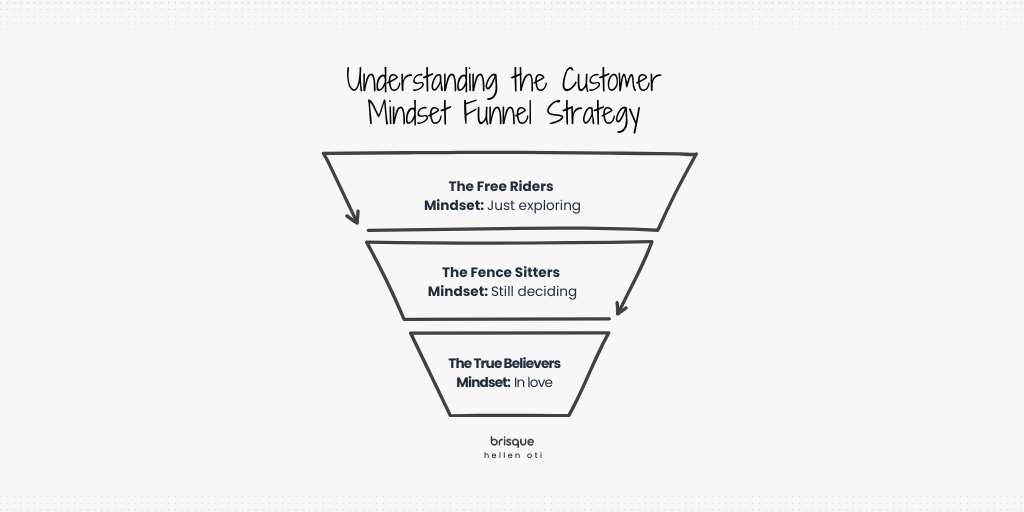
Which Customer Type Should You Prioritize as a Startup?
Your startup marketing strategy should evolve based on your company’s current growth stage. As you progress from startup to more established phases, your marketing priorities and tactics will need to adapt to meet new challenges and opportunities.
1. Idea Stage – Validate the Concept
At the idea stage, you need as much information as possible to refine your idea. Having people willing to use your product as intended is a huge win. This is true even for Free Rider customer types, provided they enjoy using your product.
Goal: Learn what users find valuable.
Your priority: learning, not scaling.
Metric to track: Repeat usage and engagement from early adopters.
Actions:
- Encourage repeat engagement and feedback.
- Study usage behavior to refine your value proposition.
- Measure consistent engagement over growth numbers.
2. Early Launch Stage – Build Trust and Proof
Once you have a working version, or a Minimum Viable Product (MVP), your goal shifts to converting Fence Sitters—the ones who are curious but cautious.
Goal: Convert curiosity into commitment.
Priority: Conversion learning.
Metric to track: Conversion rate from trials to paid users.
Actions:
- Offer low-barrier entry points (demos, free trials, beta invites).
- Use testimonials and user stories for credibility.
- Collect feedback to strengthen product-market fit.
3. Growth Stage – Strengthen Loyalty
At this stage, focus on True Believers —your paying customers who already love your product.
Goal: Retain and empower loyal customers.
Priority: Retention and advocacy.
Metric to track: Customer retention rate and referrals.
Actions:
- Introduce referral programs and loyalty perks.
- Create branded experiences that encourage sharing.
- Foster a strong user community.
4. Scale Stage – Systemize the Funnel
Once you have steady revenue and customer patterns, your attention returns to the whole funnel.
Goal: Maintain a balanced customer ecosystem.
Priority: Focus on balance and optimization, maintaining the funnel so that each group supports the next.
Metric to track: Customer Acquisition Cost to Life Time Value Ratio (CAC-to-LTV), customer journey flow efficiency (customer conversion rate from one stage of the funnel to the other).
Actions:
- Keep attracting new Free Riders for awareness.
- Nurture Fence Sitters through personalized communication and offers.
- Deepen True Believers’ connection through continuous product improvement.
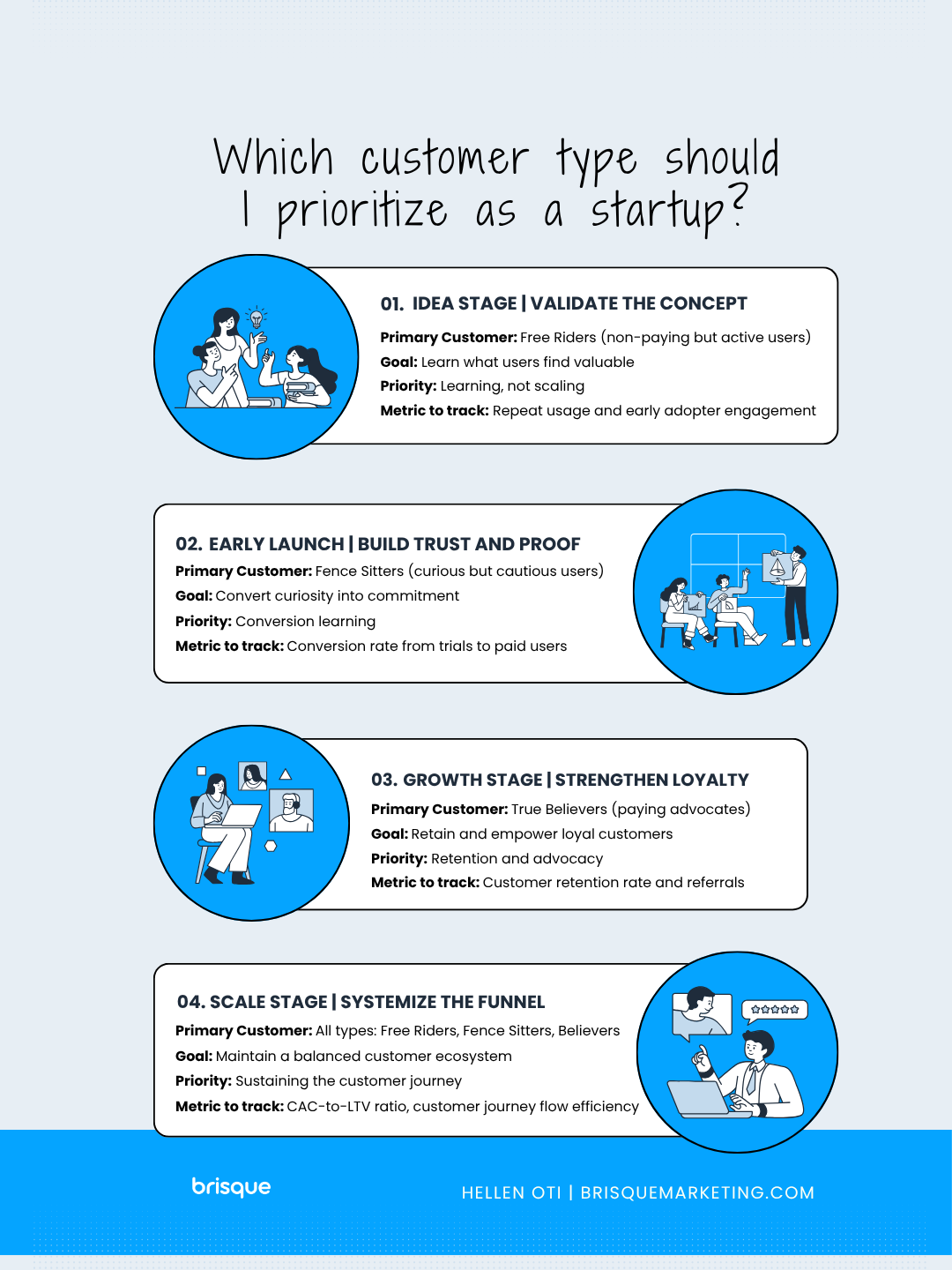
Here’s an easy summary:
- Early stage = learn fast.
- Launch = convert trust.
- Growth = deepen loyalty.
- Scale = optimize the whole funnel.
Final word: Don’t Discount Non-Paying Customers
When we think about our sales funnel, we often imagine a linear path from lead to customer. But in reality, every potential customer has a mindset that influences how they move along that path. Understanding where your customer is in their thinking helps you attract the right kind of people.
Although I wasn’t paying for Netflix, I was still consuming their content and sharing recommendations with friends. Essentially, sometimes we need those non-paying customers to get things going, especially early on in the startup game.
Non-paying customers are often silent brand advocates. They amplify your message for free, and that’s worth more than you might be able to quantify. The question is, is your strategy set up to capture that relevance?
Read next:

